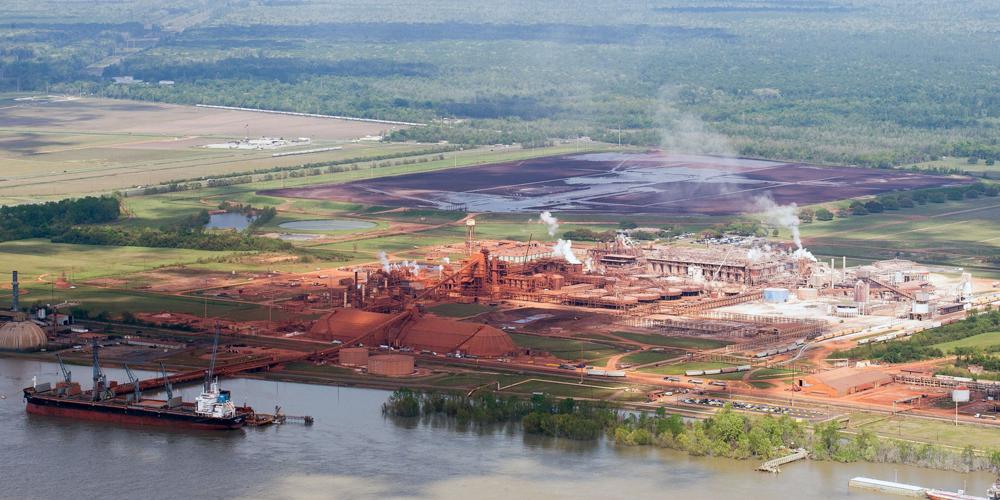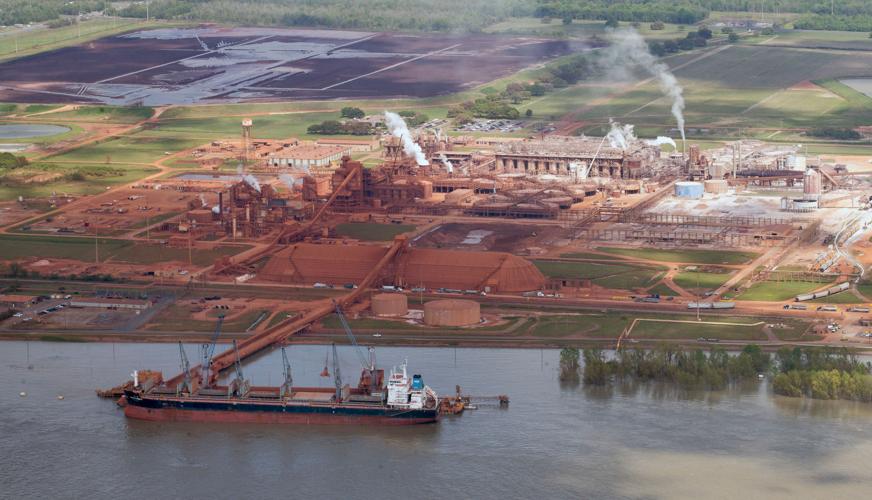Ten years ago, the then-owners of a bauxite refinery near Gramercy told the state that their operation had been unwittingly emitting the toxic heavy metal mercury into the air — potentially for decades — without state authorization or company officials knowing.
After the disclosure, the operation then known as Noranda Alumina received a $95,750 fine and got authorization to be Louisiana's largest emitter of mercury into the air, with a commitment to bring those emissions down 20% over the five-year term of the permit.
Now, the facility, since renamed Atalco Gramercy, is seeking a new air permit from the state Department of Environmental Quality with a mercury limit slightly above the 20% cut called for in 2017.
But federal regulators recently told state officials that they and Atalco need to do a lot more than the permit proposes to track and cut down on mercury particles and dusty emissions. The EPA says the plant should strive to cut mercury by as much as 99% from the Mississippi River complex.
In a letter to the state this month, U.S. Environmental Protection Agency officials recommended a series of measures, including the following:
- fence-line and mobile air monitoring for mercury around Atalco with publicly disclosed data
- studies that examine the impact of dust inside neighbors' homes, in their gardens and on cattle, chicken, fish and other pieces of the local food chain
- stronger mercury and dust pollution controls at Atalco and lower mercury emissions limits than what the state permit proposes; and
- a public hearing on the proposed permit that includes "an assessment and explanation of air toxics risk" posed to the community and the steps DEQ and Atalco have done "to reduce emissions."
The EPA also said Louisiana may need to do more to protect nearby residents from eating fish that may be contaminated with mercury. The state already has mercury advisories for the nearby Blind River and Lake Maurepas, but the feds question whether one might be necessary for the Mississippi River.
EPA officials noted that the headwaters of the Blind River are just north of Atalco and that the river empties into Lake Maurepas. Atalco also sits on the Mississippi, along with several other facilities that emit mercury.
"Therefore, EPA strongly encourages LDEQ to continue to work with Atalco and other industries to reduce mercury emissions in the Mississippi River corridor," the June 14 EPA letter says. "Doing so will continue to mitigate the negative consequences of mercury emissions to the air impacted tributaries."
Mercury has been found to be harmful to people and the environment, even in tiny amounts, according to the EPA.
As a basic element, it doesn’t break down but accumulates in animals and fish that people eat. Methylmercury accumulations in fish and shellfish can impair the neurological growth of fetuses, infants and children.
DEQ Secretary Aurelia Giacometto, who issued the Lake Maurepas fish advisory in April with state health and wildlife officials, did not respond to a request for comment. Atalco officials also did not respond to emails sent to company officials and a general communications email address.
But in a report to DEQ in February, Atalco officials said they may be ready to choose new control technology for mercury emissions by the middle of this year.
In addition to the mercury releases, area residents have routinely complained to DEQ about red and white dust coming from the plant, including a Gramercy town alderman who is a retired chemical industry worker, agency records show.
"Community members have indicated that their pets routinely have red dust on their paws and coats," wrote Jeffrey Robinson, an EPA Region 6 air permits official, in the letter to DEQ.
One site, three air permits
EPA's letter makes only recommendations to DEQ. In a regulatory quirk, the Atalco operation, which exists as on one continuous site, is broken up under three state air permits.
In recent public comments, the environmental groups Earthjustice, The Descendants Project and Sierra Club have criticized that structure because they argue it allows the operation to avoid pollution thresholds that would require more intensive review — if the plant's emissions now divided up under the three permits were counted as one source.
Those steps could include air modeling and a requirement the company look at the toughest pollution controls. In permit records, Atalco says emissions levels for the main refinery, which is now up for review, don't require those steps.
In addition to mercury concerns, the environmental groups shared their own air modeling on cumulative particulate emissions, which they argue does the additional review not required of Atalco.
The analysis, which tracked standard methods used by EPA and Atalco's predecessor in 2009, found emissions for the tiniest particles, 2.5 microns or smaller, well exceed the 24-hour and annual limits across the skies of Lutcher, Gramercy, Mt. Airy, Garyville, Wallace and parts of Paulina.
The worst areas nearest the plant were around double the 24-hour and annual particulate limits, the air modeling found.
Marylee Orr, executive director of the Louisiana Environmental Action Network, which has been tracking the mercury issue for years, called on DEQ to mandate EPA's recommendations.
"Anything less would be negligent," Orr said. "I appreciate the U.S. EPA for being a voice of reason in this situation that has been allowed to impact our people and environment for way too long."
DEQ and Atalco say mercury and particulate emissions fall within state air standards.
What Atalco does
Atalco Gramercy, which is owned by Atlantic Alumina, plays a critical role in the nation's industrial pipeline.
It is the only refinery in the United States that turns raw bauxite ore into alumina, a precursor material used to make specialty chemicals and the metal aluminum, a vital material for aerospace, industrial, construction and military purposes.
The operation is also a major taxpayer and top employer in St. James Parish, where the heart of the refinery is located.
The rust-colored ore is shipped from a mine in Jamaica and is laced with a variety of natural minerals, including radioactive elements and heavy metals like mercury.



